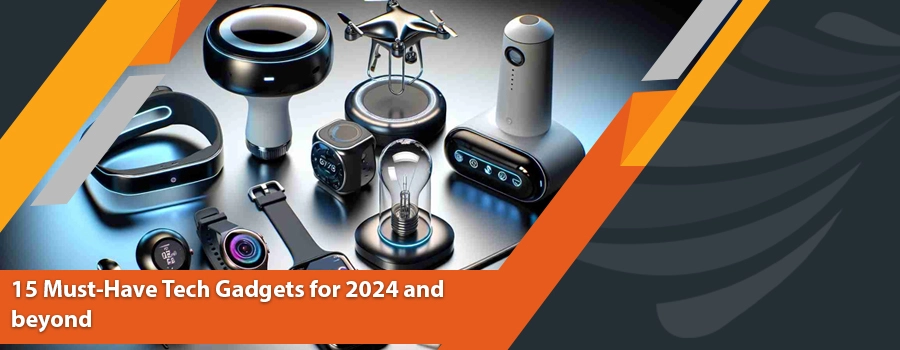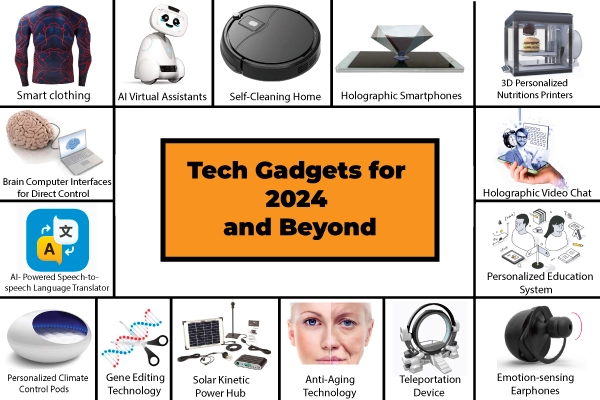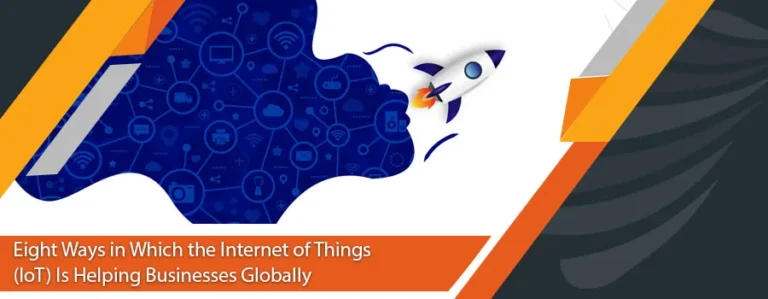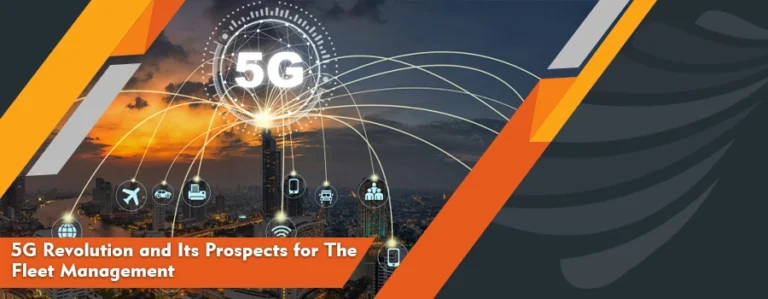In a world where daily grind feels like a perpetual meeting with tasks, technological evolution is the beacon of simplicity, transforming your life into a realm of seamless convenience and tranquility.
As we usher in 2024, our innovative landscape is embraced with groundbreaking advancements such as high-tech gadgets. But how are these tech gadgets helpful? The answer lies in understanding these tech gadgets’ profound impact in reshaping your daily life activities – how we work, navigate, and connect.
So, let’s start exploring the latest and trending high-tech gadgets set to define 2024 and beyond. Each gadget is unique and opens a gateway to a new era of possibilities and innovation. So, buckle up; this article will cover all the best high-tech gadgets you can have, from smart wearables to home innovation tools.
How Can Tech Gadgets Change Your Living?
Technology has altered the way we interact, live, and behave. People keep updated with tech gadgets to keep pace with the rapidly evolving world. Modern tech gadgets help us handle work and house chores and provide emotional assistance.
The robotic feature, natural language processing, emotional intelligence (EI), and AI integration allow the devices to talk, share advice, consider facts, and help deal with stress and loneliness. Also, tech gadgets can save lives by giving first aid and sending alerts to nearby hospitals. Advanced security features and personalized services have revolutionized how we navigate the world, fostering a sense of independence and empowerment.
Tech Gadgets for 2024 and Beyond
The smart tech gadgets you will experience in the new future are highlighted here:
1. Smart Clothing
Smart clothing is where textiles merge with technology, providing a comfortable, fashionable, and functional solution. Smart clothing monitors wearers’ health condition and fitness. It collects real-time data from vital signs such as pulse control, muscle stretch, temperature, physical movement, blood pressure, and heart rhythm. This data via Bluetooth is transferred to other devices like smartphones and hospital databases. It sends instant emergency alerts, keeping them healthy and fit.
One of the latest examples of smart clothing is Nadi X yoga pants. They are the best fit for those who do yoga at their homes. With haptic feedback, it creates small vibrations in your body to alert you when you need to adjust your position.
2. AI Virtual Assistants
The AI Virtual Assistants or Intelligent Virtual Assistants (IVA) provide intelligent human responses. With AI and natural language processing, they can respond to your needs more intuitively. You can ask them to make travel arrangements, schedule appointments, manage expenses, and deal with house chores.
IVA also understands your verbal communication and can track your non-verbal behavior in real-time. With Emotional Intelligence (EI), AI virtual assistants can understand and respond to human emotions by analyzing our body language, speech, facial expressions, and posture.
One of the latest examples of IVA is Google Home. It interacts with users via voice commands and performs numerous tasks such as playing music, sending emails or messages, responding to calls, playing games, and many more. It can also control smart home devices like thermostats, lights, and cameras to provide a more convenient experience.
3. Self-Cleaning Home
Cleaning the home is a time-consuming and exhausting process. Now, with the help of the technological revolution, you do not need to worry more about it. Your home can now clean itself without your assistance. With AI integration, the Internet of Things (IoT), robotics, and other technologies, smart homes can arrange laundry, dusting, mopping, and vacuuming. Smart self-cleaning homes can also use ultraviolet light to disinfect surfaces and kill bacteria.
One of the examples of tech gadgets used in self-cleaning homes is robotic vacuums. Without human intervention, they navigate through the home for cleaning purposes. You can also schedule it to operate at a particular time.
4. Holographic Smartphones
A holographic display is a type of 3D display that, with light diffraction, displays realistic three-dimensional images in air. The latest technology has huge applications in education, communication, and entertainment.
The holographic smartphone is an extremely popular concept because you don’t need to take your phone out of your pocket to check notifications. You do not need to worry more if you forget it, fall it somewhere, or get it stolen. You only need a surface where the hologram shines, and you can see your phone display. It contains all the features of a smartphone but in a hologram form.
5. Brain-Computer Interfaces for Direct Control
Brain-computer interfaces (BCIs) allow people to control machines with their thoughts, helping people with motor impairments. BCIs enable direct communication between humans and external devices and bypass traditional motor pathways.
People with motor impairments can become independent by doing their daily activities independently. It has numerous applications, but the most promising one is movement control. BCIs allow users to control prosthetic limbs, wheelchairs, exoskeletons, and other assistive devices, allowing users to perform various activities that were previously impossible.
One of the simplest examples is the typing-by-brain approach. It requires the user to visualize navigating a digital keyboard with a pointer to select letters. Meanwhile, electrodes capture brain activity, and machine learning algorithms translate those thoughts into typed words by identifying patterns connected to those thoughts. In the most rapid of these earlier brain-based typing tests, participants could type approximately 40 characters, or eight words, every minute.
6. 3d Personalized Nutrition Printers
A personalized nutrition printer is the ultimate nutritionally dietary solution for you. 3D printing technology creates customized food items according to personal nutritional needs and health preferences. You can integrate your data, such as allergies, nutritional goals, and dietary restrictions, to produce a meal that aligns with your preferences. These printers provide convenience and help resolve many health issues due to poor diet.
By manipulating food “ink” and automatically combining different nutritional elements, it best fits people with specific nutritional profiles—like athletes. To make foods that precisely match their nutritional needs regarding nutrient concentrations, you can program or download apps for their 3D printers.
The applications of this technique are wider than sports nutrition. Every patient receiving care in a hospital or senior home may have access to food items created specifically to meet their dietary requirements. Meal planning could be revolutionized by personalized nutrition printers, guaranteeing senior citizens receive meals specifically catered to their nutritional needs. This could lead to better health outcomes.
7. AI-Powered Speech-to-Speech Language Translator
AI-Powered Speech-to-Speech language translator bridges the communication gap between people who speak different languages. With AI algorithms and data analytics, it converts and processes spoken words from one language to another in real-time.
Imagine you meet a traveler who speaks an unfamiliar language, trying to seek your help. If you have an AI-powered speech-to-speech translator installed in your mobile phone or smartwatch, you can convert his language into your language for fluent conversation. This gadget breaks down the language barrier and promotes global connectivity.
8. Holographic Video Chats
Beyond the bounds of conventional video conversations, holographic video chats offer a futuristic and immersive communication experience that uses holographic technology to replicate in-person interactions. It allows you to communicate and connect more vividly and captivatingly by appearing as three-dimensional holograms in a shared virtual area.
Now, you can have a video conversation with someone where their holographic image is projected into your real surroundings, giving the impression that they are in the same room as you. This technology records and replicates realistic three-dimensional images using sophisticated holographic displays, cameras, and depth-sensing sensors. These holographic video conversations are available with appropriate gear, such as augmented reality (AR) glasses or specialized displays.
Holographic video chats have many possible uses, from social interactions and virtual events to corporate meetings and teamwork sessions. Professionals can use Holographic video conferencing to improve remote communication and facilitate a more natural exchange of ideas and expressions. Lifelike hologram talks could allow friends and family who are separated by distance to feel closer and more present.
9. Personalized Climate Control Pods
Personalized climate control pods are creative areas that accommodate personal preferences for ventilation, humidity, temperature, and comfort. These pods generate a micro-environment according to user preference. The idea is especially pertinent in shared spaces, workplaces, or public areas where people could have different preferred temperatures.
You can change the settings in these temperature control pods using simple interfaces like touchscreens or smartphone apps. Sophisticated sensors ensure accurate control over temperature and air quality by continuously monitoring external circumstances and human response. Adaptive HVAC (heating, ventilation, and air conditioning) systems and materials that adjust to personal preferences might be included in the pods.
You can see its application in public areas like workspaces and transportation settings. Everyone can have their personalized climate control pods. Rather than depending on a central HVAC system, you can enter your assigned pod and adjust the airflow and temperature to your preference. In addition to improving comfort, this helps save energy by concentrating climate control on sections of the room rather than the entire one.
10. Solar-Kinetic Power Hub
The idea of a “Solar-Kinetic Power Hub” is a novel method of addressing sustainable energy issues. You may simultaneously access two renewable energy sources by combining solar panels with kinetic energy harvesting technology.
Imagine a modern, easily navigable gadget that quietly gathers energy from the surroundings and supplies electric energy for your home. The Solar-Kinetic Power Hub is a shining example of energy efficiency, whether used to collect sunlight during the day or to capture the kinetic energy produced by daily household activities. With its innovative form and progressive features, this technological device suggests a future in which our daily activities will help power our homes in an environmentally friendly manner.
11. Emotion-sensing Earphones
In terms of wearable technology, emotion-sensing earphones are a revolutionary development. Modern gadgets like this go beyond standard audio features by adding sophisticated sensors to identify the user’s emotional state. Using biometric cues like skin conductivity, heart rate, and facial expressions, these earbuds can automatically adjust their sound output to mirror the user’s emotional state.
These emotion-sensing headphones provide a personalized audio experience, whether dynamically changing the music pace to improve relaxation or choosing lively songs to increase vitality. Imagine having a pair of stylish, wireless earbuds that provide superb sound quality and serve as a real-time emotional support system by reacting to your emotions. With the help of this cutting-edge technology, the audio equipment of the future will be able to sense and react to your emotions in addition to what you hear.
12. Anti-Aging Technology
Anti-aging technology refers to innovative procedures and goods that preserve youth and enhance general well-being. For instance, peptides, retinoids, and antioxidants are used in skincare technologies to help revitalize the skin, minimize wrinkles, and improve elasticity. In genetic therapeutics, businesses are looking into techniques to target and alter aging-related genes to potentially slow down the molecular aging process.
One noteworthy example is the development of senolytic drugs, which target and remove senescent cells – known to contribute to aging and age-related disorders. Smart wearable technology, such as smartwatches and health trackers, also help to reverse aging. They give users real-time information on sleep habits, physical activity, and other health parameters, helping them make healthy lifestyle decisions that slow aging.
13. Teleportation Device
The idea of a teleportation device captivates your imagination of the fastest traveling since it promises a dramatic advancement in transportation technology. Without the necessity for conventional means of transportation, a teleportation device might instantly move people or things from one place to another. Imagine entering a stylish teleportation pod and traveling hundreds or perhaps thousands of miles to reach your location instantly.
The teleportation concept relies on the principle of quantum theory, which states that transferring a particle from one place to another is possible without the particle moving physically.
This futuristic technology presents possibilities for effectiveness, ease, and worldwide connectedness. Long-distance travel would take only seconds, and commutes would disappear completely. However, given the intricacies of quantum mechanics and the possible threat to identity and security, the actualization of teleportation technology would also present substantial ethical and scientific hurdles.
The idea of a teleportation device presents a new picture of a society where geographical distances are meaningless, resolving many of our traveling concerns.
14. Personalized Education System
Every student has unique capabilities and processes learning uniquely; therefore, some students lag in schools in a monotonous education system and face difficulties. The Personalized Education System is a new idea designed to educate students according to their minds, behavior, and nature. It uses artificial intelligence (AI) and virtual reality (VR) to provide students with a transformative educational system that is easily accessible via their smartphones or smart watches.
It uses AI algorithms to examine each student’s distinct learning profile and customize the learning process to suit their requirements. It expands the boundaries of conventional teaching techniques and transforms learning into an immersive and interactive experience.
Visualize a scenario where students can use their smartphones to connect with AI-powered tutors offering tailored lesson plans, interactive simulations, and instant feedback. When VR is used, abstract concepts become real and interesting for students as they immerse themselves in virtual learning settings, bringing complex subjects to life.
This technological device provides a dynamic, engaging, and personalized learning experience that adapts to each student’s speed and learning style, not just customizing teaching but also fostering a love of learning.
15. Gene Editing Technology
A significant advancement in biotechnology, gene editing technology allows for the exact modification of DNA sequences in living things. The versatile and precise gene-editing system CRISPR-Cas9 is one of the most well-known tools in this field. This technology allows researchers to target and edit genes, which may be used to treat diseases, improve desired features, or even fix genetic abnormalities.
One of the best examples of gene editing is a tiny instrument that functions as a molecular shear, enabling scientists to cut and modify genetic material precisely. This technology holds great promise for medical advancements, from developing personalized medications to treating genetic abnormalities. However, ethical questions are raised, which spark debates regarding the appropriate application of gene editing, particularly regarding human germline modification.
Conclusion
The world of technological innovation highlights the development of tech gadgets that may completely revolutionize the world in the upcoming years. With features like gene editing technology and seamlessly integrated personalized education systems into smartphones, these devices are revolutionizing our system, connecting people, and even reshaping life. The coming together of AI, VR, and other cutting-edge technologies has high potential to improve our everyday lives and usher in a time when the possibilities will only get bigger. In the ongoing story of technological advancement, 2024 promises to be a significant year as these devices become a part of our daily lives, ushering in a time when science fiction becomes a reality.





